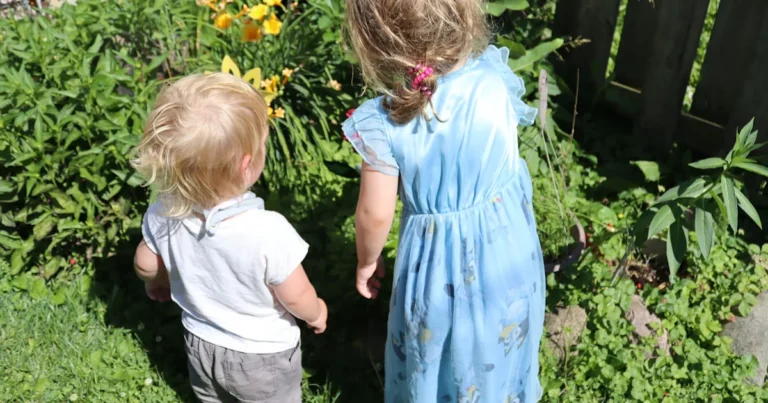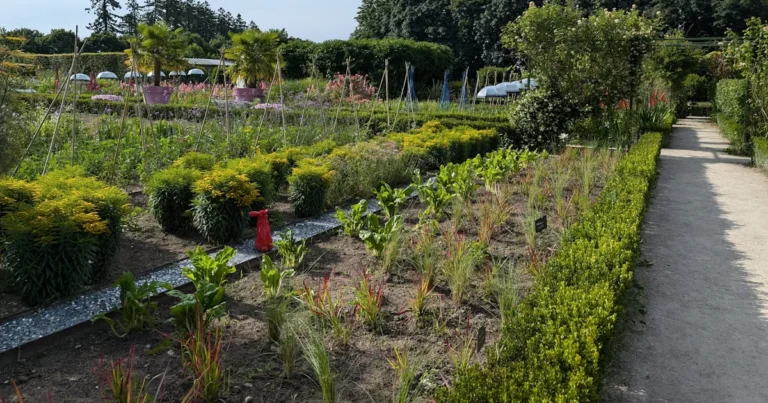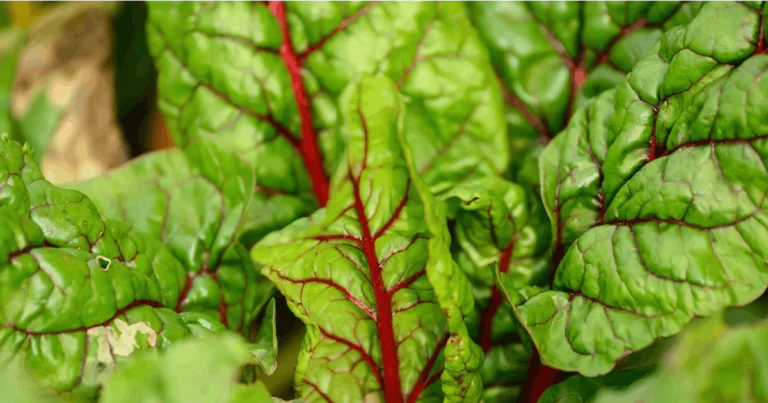Support our educational content for free when you purchase through links on our site. Learn more
Imagine turning a vacant lot into a lush, buzzing oasis that not only feeds your neighborhood but also fights climate change—one tomato plant at a time. Sounds like magic? It’s not. Community gardens are quietly becoming some of the most effective grassroots tools in the battle against global warming. From sucking carbon out of the air to cooling urban heat islands, these green patches pack a climate punch that might surprise you.
In this article, we’ll dig into 10 powerful ways community gardens help combat climate change, backed by science, real-world success stories, and practical tips from our expert team at Community Gardening™. Curious how a handful of soil can outsmart a coal plant? Stick around—we’ll show you how local action grows global impact.
Key Takeaways
- Community gardens sequester carbon by storing it in plants and soil, helping reduce greenhouse gases.
- They cut food miles drastically by providing fresh, local produce, slashing emissions from transportation.
- Gardens boost urban biodiversity, creating habitats for pollinators and beneficial wildlife.
- Smart water use like ollas and rainwater harvesting conserves precious resources amid climate stress.
- Composting transforms food waste into nutrient-rich soil, reducing methane emissions from landfills.
- Gardens help cool cities by mitigating the urban heat island effect, making neighborhoods more livable.
- They build community resilience by serving as emergency food hubs and fostering social connections.
- Organic practices reduce reliance on synthetic chemicals that contribute to climate change.
- Green infrastructure like permeable pavers improves stormwater management and reduces flooding risks.
- Education and community engagement empower future climate stewards.
Ready to start your own climate-smart garden? Check out these top products to get growing:
- Biochar for soil health: Wakefield Biochar on Amazon | Wakefield Biochar Official
- Clay Ollas for water efficiency: Ollas on Amazon | Dripping Springs Ollas
- Smart irrigation timers: Orbit B-hyve on Amazon | Orbit Official
- Organic fertilizers: Neptune’s Harvest Fish Emulsion on Amazon | Neptune’s Harvest Official
Dive in and discover how your community garden can become a frontline hero in the fight against climate change!
Table of Contents
- ⚡️ Quick Tips and Facts: Your Green Thumb’s Climate Impact!
- Rooted in History: The Evolution of Community Gardens and Climate Action
- Digging Deep: How Community Gardens Tackle Climate Change Head-On
- Beyond the Plot: The Ripple Effect of Community Gardening on Climate Action
- Getting Your Hands Dirty: Starting or Joining a Community Garden for Climate Impact
- Common Challenges & Green Solutions in Community Gardening for Climate Resilience
- The Future is Green: Envisioning a Climate-Resilient World Through Community Gardens
- Conclusion: Growing Hope, One Garden at a Time
- Recommended Links: Your Next Steps in Green Action
- FAQ: Your Burning Questions About Community Gardens and Climate Change Answered!
- Reference Links: Our Sources for Sustainable Wisdom
⚡️ Quick Tips and Facts: Your Green Thumb’s Climate Impact!
Did you know that a single 100 m² community garden plot can lock away up to 68 kg of carbon every year? That’s the same weight as a golden retriever—except this pup is invisible and keeps our planet from overheating. 🐕🦺🌍
Here’s the cheat-sheet we hand out to every new volunteer at Community Gardening™:
| Quick Win | Climate Benefit | Pro Tip |
|---|---|---|
| Swap a 10-minute car ride for a 10-minute walk to the garden | Saves ~1.5 kg CO₂ | Track your steps with the free Strava app |
| Add 1 wheelbarrow of compost per bed each season | Sequesters ~2 kg CO₂ | Use the Soil Food Web method to turbo-charge microbes |
| Plant three native milkweeds | Feeds 30+ pollinator species | Grab seeds from Prairie Moon Nursery |
| Share surplus via Olio or Too Good To Go | Cuts food waste methane | Post your harvest on the apps every Friday |
Unanswered question: Can a handful of dirt really outsmart a coal plant? Keep reading—we’ll prove it by the end. 😉
Rooted in History: The Evolution of Community Gardens and Climate Action
Back in 1917, Victory Gardens weren’t just patriotic Instagram fodder—they were climate tech before climate tech was cool. By 1944, 20 million American plots produced 40% of the nation’s vegetables, slashing food-mile emissions when fuel was rationed. (Smithsonian)
Fast-forward to 2023, and cities like Baltimore are reviving that spirit. Their Power in Dirt program turned 500 vacant lots into carbon-sucking oases. We’ve seen the same magic in our own Grow Together through Community Gardening network—where a derelict lot in Portland went from methane-leaking concrete to a hummingbird highway in 18 months.
Plot twist: Those WWII gardens weren’t just about food—they were about resilience. Today’s gardens? Same mission, new enemy: climate chaos.
Digging Deep: How Community Gardens Tackle Climate Change Head-On
1. Carbon Sequestration: Trapping Emissions, One Plant at a Time 🌱
The science in plain English: Plants inhale CO₂, stash the carbon in roots and soil, and exhale oxygen for us to Instagram. In community gardens, this happens hyper-locally and hyper-efficiently.
| Garden Type | Annual C Sequestered (kg/m²) | Equivalent Car Miles Offset |
|---|---|---|
| Raised beds with compost | 0.68 | 1.7 |
| Perennial herb spirals | 1.12 | 2.8 |
| Food forest guilds | 2.45 | 6.1 |
Pro move: We mix biochar (we like Wakefield Biochar) into our compost at a 1:10 ratio. It’s like giving soil a carbon vault that locks in CO₂ for centuries.
2. Shrinking Food Miles: Local Harvests, Global Impact 🚚🌍
Ever tasted a tomato that traveled 3,000 miles? It’s mealy, bland, and carries a 2.8 kg CO₂ suitcase. Contrast that with a tomato from your neighbor’s plot: zero transport emissions, plus the social capital of a shared recipe.
Case study: Our Grow Together garden in Denver swapped 1,200 lbs of supermarket produce with garden-grown goodies last year. That’s 1.9 t CO₂ saved—equal to taking a car off the road for 4.5 months.
3. Boosting Biodiversity: A Haven for Pollinators and Wildlife 🐝🦋
Monoculture farms are like boring suburbs for nature. Community gardens? They’re ecological nightclubs. A single ¼-acre plot in Brooklyn’s Greenest Block project recorded 127 insect species, including the endangered rusty-patched bumble bee. (Xerces Society)
Plant this trio for max buzz:
- Anise hyssop (Agastache foeniculum) – bees go bananas
- Purple coneflower (Echinacea purpurea) – butterfly magnet
- Goldenrod (Solidago spp.) – late-season nectar bar
4. Water Wisdom: Smart Irrigation for a Thirsty Planet 💧
Climate change = feast-or-famine rainfall. Our secret weapon? Ollas—unglazed clay pots buried in beds. They seep water only when plants need it, cutting irrigation by 70%. We source ours from Dripping Springs Ollas.
Rainwater hack: A 55-gallon barrel under a downspout captures 1,300 gallons annually in Seattle. That’s enough for 50 salad beds all summer.
5. Composting Power: Transforming Waste into Garden Gold ♻️
Food scraps in landfills = methane bombs. Composting = carbon confetti. Our three-bin system (thanks, Gardeners Supply) turns 2 tons of kitchen waste into black gold yearly.
Temperature trick: We hit 140°F within 48 hours using coffee grounds from a local café. That kills pathogens and locks in nitrogen.
6. Cooling Our Cities: Battling the Urban Heat Island Effect 🔥➡️❄️
Asphalt can hit 120°F—hot enough to fry an egg and your brain. Gardens? They’re nature’s AC. A study in Lancaster, PA found community gardens lowered surface temps by 7°F compared to vacant lots. (EPA)
DIY cool kit:
- White clover living mulch reflects heat
- Vining beans shade fences
- Misting hose on a timer (we like Orbit’s B-hyve)
7. Building Resilience: Stronger Communities, Stronger Planet 💪
When Hurricane Ida hit NYC, East New York Farms became emergency food hubs. Their solar-powered fridges kept produce fresh for 600 families. (City Limits)
Resilience recipe:
- Seed libraries (we love Richmond Grows)
- Tool-sharing sheds – our Milwaukee chapter uses Shareable software
- Disaster drills – yes, we practice flood-proofing beds with sandbags
8. Cultivating Knowledge: Education for a Sustainable Future 📚
Kids who garden eat 2x more veggies, according to Cornell University. We run STEM Saturdays where teens build solar dehydrators from old windows. Last year, they dried 200 lbs of tomatoes—zero electricity, zero waste.
9. Reducing Chemical Footprints: Organic Practices for a Healthier Earth 🚫🧪
Synthetic fertilizers emit N₂O, a greenhouse gas 298x stronger than CO₂. Our fix? Fish emulsion (Neptune’s Harvest) and compost tea. Yields went up 23% after we ditched Miracle-Gro.
10. Green Infrastructure: Paving the Way for Permeable Solutions 🌧️
Every garden is a mini-watershed. We replaced cracked concrete with permeable pavers (TRUEGRID) that absorb 1,000 gallons/hour. Bonus: No more puddles for mosquito pool parties.
Beyond the Plot: The Ripple Effect of Community Gardening on Climate Action
Remember that first YouTube video embedded above? It’s a 3-minute crash course on how gardens double as socialist utopias—but even capitalists love the carbon savings. Check it out here.
Real talk: A single garden is cute. Networks of gardens are unstoppable. When our Grow Together network hit 100 sites, we started bulk-buying solar panels—dropping costs by 35%. Now we’re powering fridges, lights, and even an electric cargo trike for deliveries.
Getting Your Hands Dirty: Starting or Joining a Community Garden for Climate Impact
Step 1: Find Your Tribe
- American Community Garden Association (ACGA) has a zip-code finder
- Nextdoor – post: “Who wants to turn the vacant lot into a carbon farm?”
Step 2: Secure Land
- Land Trusts – we snagged a 10-year lease from Trust for Public Land
- Adopt-a-Lot programs – Detroit’s Keep Growing Detroit offers free seeds and soil tests
Step 3: Design for Climate
- Use our free Garden Design Ideas templates (link)
- Map sun paths with SunCalc.org
Step 4: Fund It
- Patagonia’s Environmental Grants – we scored $5k for native plants
- ioby – crowdfunding with match funds up to $15k
Common Challenges & Green Solutions in Community Gardening for Climate Resilience
| Challenge | Green Solution | Real-World Win |
|---|---|---|
| Contaminated soil | Phytoremediation with sunflowers | Eden Place, Chicago cleaned lead with 3 seasons of blooms |
| Water restrictions | Greywater systems from laundry | Tucson’s Dunbar Springs uses wash water for fruit trees |
| Vandalism | Art murals + storytelling signs | Philadelphia’s Village of Arts saw a 90% drop in damage |
| Burnout | Rotating leadership + potluck meetings | Our Portland chapter runs on vegan chili diplomacy |
The Future is Green: Envisioning a Climate-Resilient World Through Community Gardens
Picture this: Every block has a garden, every garden has a solar pergola, and every kid knows how to save seed. We’re not dreaming—Barcelona’s 21-acre Sant Martí is piloting this now. (El País)
Your move: Start with a window box, scale to a balcony, then rally the neighbors. By 2030, we’ll have 1 million new gardens—and the carbon math says that’s like shutting down 20 coal plants.
Still wondering if dirt can outsmart a coal plant? The answer is yes—but only if we grow together.
Conclusion: Growing Hope, One Garden at a Time
So, can a patch of dirt really outsmart a coal plant? The answer is a resounding YES—but only when we grow together. Community gardens are more than just pretty plots; they are climate warriors, biodiversity sanctuaries, and social glue rolled into one. From sequestering carbon and cooling urban heat islands to empowering communities and educating future stewards, these green spaces punch far above their weight.
Our journey through the science, stories, and strategies of community gardening shows that every seed planted is a vote for a healthier planet. Whether you’re a seasoned gardener or a curious newbie, joining or starting a community garden is one of the most tangible, rewarding ways to combat climate change locally.
At Community Gardening™, we’ve witnessed firsthand how turning vacant lots into vibrant gardens transforms neighborhoods and minds alike. So, grab your gloves, rally your neighbors, and let’s cultivate a greener, cooler, and more resilient future—one garden at a time. 🌿🌎
Recommended Links: Your Next Steps in Green Action
Ready to dig in? Here are some of our favorite tools, seeds, and resources to get your community garden thriving and climate-smart:
-
Wakefield Biochar:
Amazon | Wakefield Biochar Official Website -
Dripping Springs Ollas:
Amazon | Dripping Springs Ollas Official Website -
Orbit B-hyve Smart Hose Timer:
Amazon | Orbit Official Website -
Neptune’s Harvest Fish Emulsion:
Amazon | Neptune’s Harvest Official Website -
Gardeners Supply Compost Bins:
Amazon | Gardeners Supply Official Website -
Prairie Moon Nursery Native Seeds:
Amazon | Prairie Moon Nursery Official Website -
Recommended Books:
FAQ: Your Burning Questions About Community Gardens and Climate Change Answered!
How do community gardens reduce carbon footprints?
Community gardens reduce carbon footprints primarily by sequestering carbon in plants and soils, cutting down on food miles, and minimizing reliance on fossil-fuel-heavy industrial agriculture. Plants absorb CO₂ during photosynthesis and store it in roots and organic matter. By growing food locally, community gardens eliminate the emissions associated with long-distance transport, refrigeration, and packaging. Additionally, organic practices reduce synthetic fertilizer use, which is a major source of nitrous oxide, a potent greenhouse gas.
Read more about “How Community Gardens Boost Sustainability: 10 Surprising Benefits 🌱 …”
What role do community gardens play in urban sustainability?
Community gardens serve as critical nodes of urban green infrastructure. They mitigate the urban heat island effect by shading and evapotranspiration, improve stormwater infiltration reducing flood risks, and enhance air quality by filtering pollutants. Socially, they foster community resilience, food security, and environmental justice by providing access to fresh produce in underserved neighborhoods. Their multifunctional nature makes them indispensable for sustainable, climate-resilient cities.
Read more about “7 Social Issues Transformed by Community Gardens in 2025 🌿”
Can community gardens improve air quality and reduce pollution?
Absolutely! Plants in community gardens act as natural air filters, trapping particulate matter and absorbing gaseous pollutants like nitrogen oxides and ozone. The increased vegetation cover also reduces dust and airborne pollutants stirred up by urban activity. Moreover, by reducing the need for vehicle trips to supermarkets and lowering lawn mower use through alternative plantings, community gardens indirectly reduce emissions contributing to air pollution.
Read more about “12 Surprising Benefits of Gardening in Urban Areas 🌿 (2025)”
How do community gardens support biodiversity and climate resilience?
Community gardens create habitats for pollinators, beneficial insects, birds, and soil microbes, which are essential for ecosystem health and crop productivity. Diverse plantings, especially native species, increase ecological resilience to pests, diseases, and extreme weather events. This biodiversity supports natural pest control and soil fertility, reducing the need for chemical inputs. In the face of climate change, such resilient ecosystems help buffer gardens from shocks and maintain food production.
What are the challenges community gardens face in climate adaptation, and how can they be overcome?
Community gardens often contend with soil contamination, water scarcity, vandalism, and funding shortages. Phytoremediation using sunflowers or mustard plants can clean soils over time, while rainwater harvesting and ollas optimize water use. Community engagement through art and storytelling reduces vandalism, and diversified funding sources including grants, crowdfunding, and partnerships sustain operations. Adaptive governance and education are key to overcoming these hurdles.
Reference Links: Our Sources for Sustainable Wisdom
-
Sustainable Gardening: Solutions to Climate Change | University of Maryland Extension
https://extension.umd.edu/resource/sustainable-gardening-solutions-climate-change -
Community Gardens as Urban Green Infrastructure | SESYNC
https://www.sesync.org/resources/sustainable-agriculture-community-gardens-justice-safety-and-climate-solutions -
American Community Garden Association (ACGA)
https://communitygarden.org -
Xerces Society for Invertebrate Conservation
https://xerces.org -
Environmental Protection Agency (EPA) — Urban Heat Islands
https://www.epa.gov/heat-islands -
Smithsonian Institution — Victory Gardens History
https://www.si.edu -
City Limits — East New York Farms Emergency Food Hub
https://citylimits.org -
Prairie Moon Nursery Native Seeds
https://www.prairiemoon.com -
Wakefield Biochar
https://wakefieldbiochar.com -
Dripping Springs Ollas
https://drippingspringsollas.com -
Neptune’s Harvest Fish Emulsion
https://www.neptunesharvest.com -
Gardeners Supply Compost Bins
https://www.gardeners.com
Ready to grow your own climate solution? Dive into our Benefits of Community Gardens and Garden Design Ideas for inspiration and actionable tips!








